Columnist Alexandra Pereira lets us in on how to achieve hygge, lagom and koselig both at home and on minibreaks across Scandinavia. This month she surveys the bedtime accessories of the region’s foremost sleep experts.
12 March, 2020
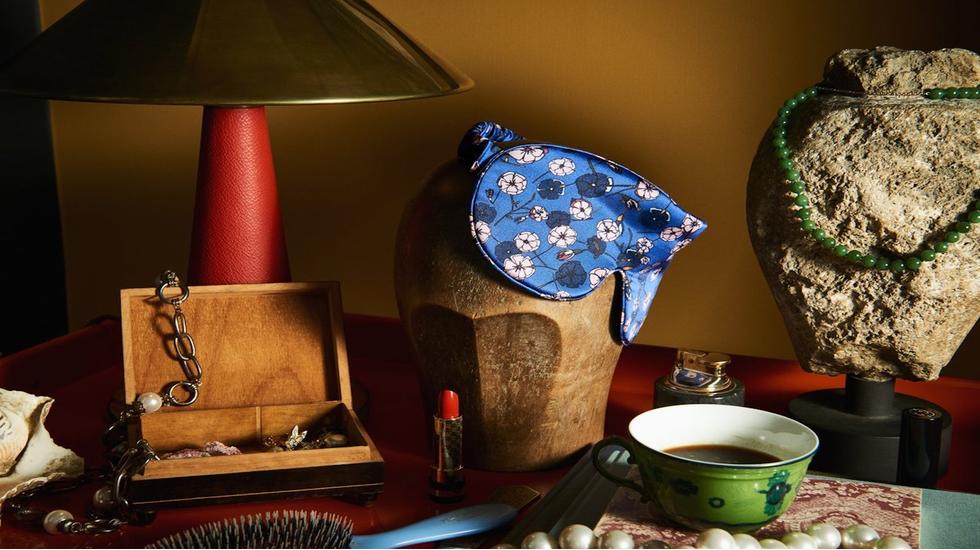
When
I moved to Scandinavia, I bid farewell to student houses,
cramped flatshares and noisy party squats along with limp
mattresses and scratchy bed linen – and with this, my sleep routine
has improved immeasurably. I’ve realised the true value of real
rest. Or at least I thought I had until I met these masters of
slumber masters. These people really know how to get some shut-eye
in the vicious Nordic winters – and how to do so in style.
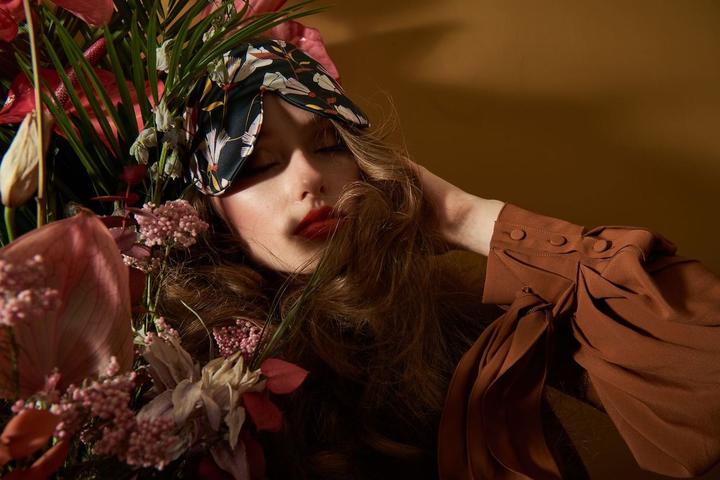
Thanks to a woman, I had the best night’s sleep I’d had in a
long time. I was blindfolded with a silk mask. It’s not how it
sounds.
Let’s go back a few days.
It was daytime and we were sat in an apartment-turned-hair
studio where the floors were so uneven you could place a bottle
side-down and it would roll to the other side of the room. Lotte
Barnholdt Mahony, glamorous in cashmere, jade beads and a black
scrunchie which held her blonde-grey hair in a bun, told me about
the resident ghost. “She’s a lonely old woman,” she said. “I say
hello to her every morning and the dog sometimes barks up at her.
I’m not afraid of her, but I can get quite scared at night time,
alone in the dark.”
It’s in part thanks to this paranormal activity that Barnholdt,
founder of The Beauty Sleeper, created a line of silk eye
masks to cover one’s face, and I was lucky enough to try one. So
began my quest to shut out the night light in my life.
We’ve all had those nights where we feel like The Princess and
the Pea (this wouldn’t be a Scandinavia-centric article without a
Hans Christian Andersen reference now, would it?). In the story,
our heroine loses hours of beauty sleep after a tiny pea was placed
under loads of mattresses – the real mark of blue blood, as it
happens.
For us, however, the moral of the story is to invest in one of
The Beauty Sleeper’s pure-silk eye
masks in the botanical “Leo” print (though we can’t guarantee
it’ll stop the feeling of veg lurking under your sheets). Couple
this with one of the brand’s silk pillows, which does wonders for
damaged hair FYI, and you’ll sleep royally well.
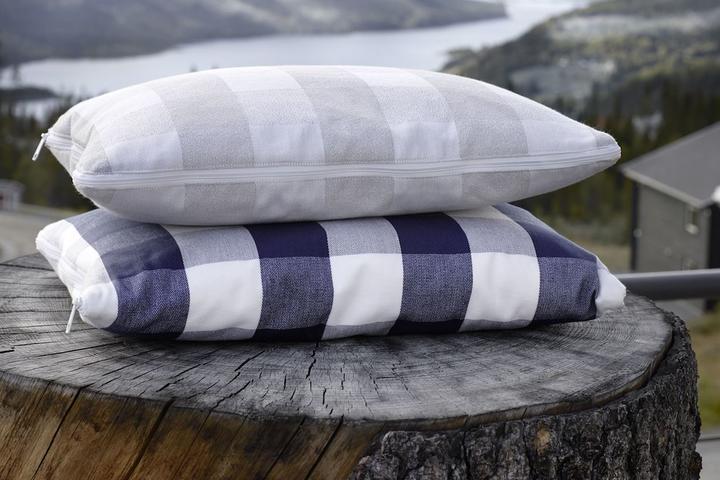
Had the princess (of The Princess and the Pea fame) had a
feather bed, she may have found it difficult to prove her snazzy
regal blood. Swedish manufacturer Hästens is among the world’s
leading mattress makers, designing a human body pillow of such
intricacies that it’s supposed to last a lifetime. In a world where
cheap, throwaway bedding and overflowing landfills are an
increasing problem, I was intrigued to find out more about how
their longevity was manifested.
Way back in 1852, a time where I imagine sleep wasn’t so
comfortable or hygienic, but when no one really knew any better,
Pehr Adolf Janson, a master saddler, and his son crafted a mattress
from natural materials including cotton, horsehair, wool and flax.
Five generations later, his great-great-grandson is still
overseeing the process.
One of Hästens’ so-called Global Sleep Trainers told me: “We
believe that horsehair is one of nature’s most magical gifts. It
has an amazing ability to transport moisture away from us and,
together with other materials we use, keeps your sleep environment
dry. Not to mention, horsehair acts like millions of springs on top
of springs.”
“Hästens’ mission has always been about making people’s lives
better,” he continues. “And the only way we know how to do that is
by creating the best beds we can.”
Until I can afford one of these holy-grail mattresses, I’m
settling for Hästens’ duck-down travel pillows (it has a zipped
compartment in which to stash your valuables).
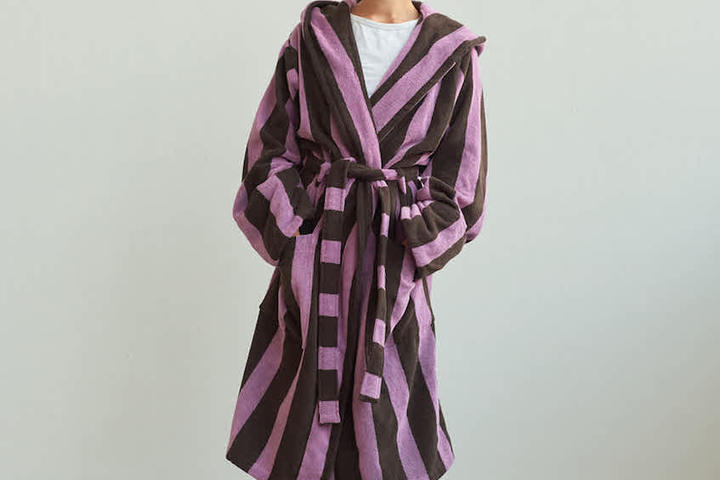
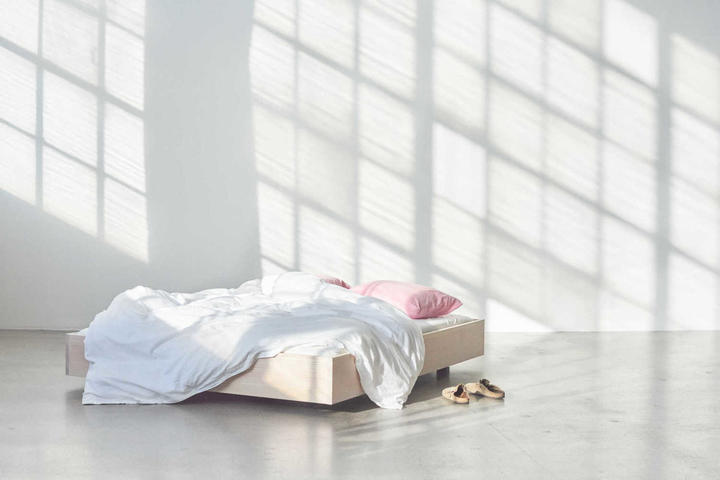
“Your bed is your most carefree zone. It’s where you’re at your
most vulnerable and emotionally exposed,” philosophised Copenhagen-based home-textile brand Tekla
Fabrics on its Instagram stories one freezing rainy Saturday
night, as the city’s residents scrolled from their beds. On the
story, black text stood out on a stark-white background, echoing
the no-nonsense vibe Tekla’s now famed organic cotton percale
bedding. The next morning, at the height of Copenhagen Fashion
Week, I sprang out of my own old sheets and down to the
showroom.
Tekla’s stylish creator is a striking Swede who, after working
in global comms for Acne Studios, started up the Eytys sneaker
brand before realising that textiles and fashion intel had gravitas
in the bedroom, too. Charlie Hedin saw a gap in the market for
bedroom apparel with elegance and accessibility
Taking cue from timeless designs (I’m looking at you Filippa K)
and bold accents (ahem, Ganni and Han Kjøbenhavn), the muted yet
alluring palettes of Tekla’s textiles are the stuff of which
bedding and bathing accessories are made. Its merino-wool blankets
designed in collaboration with architect John Pawson present
splashes of colour that contrast gorgeously with the stonewashed
percale linens (which are Oeko-Tex certified and
sustainably made).
Beyond its green appeal is Tekla’s affordability – high price
points were something that had struck Hedin when researching
decent, cool bedding. “People just don’t know how important sheets
are,” he tells me. “They think thread count is important – which it
can be – but it’s more about what type of cotton is used and how
it’s treated. Our sheets are made in Portugal.” In the pipeline for Tekla is lots of
exciting new lines, but for now, I’ve got my eye on its sexy, cosy,
70s-style chocolate-and-rose striped towel robe.
When living in Germany, I was introduced to the concept of
rückkehrunruhe. Directly translating to “return unrest”, it
encompasses the feeling you get when, on return from a trip, the
holiday blues set in.
No one understands all this more than Maria Heilmann, the
creator of sustainable Danish fashion brand Aiayu. It’s
particularly notable for its bed linens, the crumpled yet sexy
kind.
Maria told me about the genesis of her eco-conscious Copenhagen
company, which is now 16 years old. “I was introduced to Bolivia by
a friend and fell in love with this very rough country – its
people, colours, resources and landscapes. When they make a sweater
here, they do so with the intention of it lasting the next 25
years,” she said. “I saw great potential here.”
Heilman explained that using global resources can be ethical;
not everything has to be locally made. After having introduced its
llama-fibre knitwear range, Aiayu added lines made with cotton from
India and cashmere sourced in Nepal. “Natural textiles are precious
treasures,” Maria adds. “My goal is to make them last as long as
possible.”
She echoes the sentiments of Charlie Hedin. “People don’t
prioritize their sleepwear or bed linen as much as they should.
Sleep is a time for rejuvenation and we spend a lot of time in bed;
these hours deserve to be wrapped in quality, if you sleep well,
tomorrow will start off well.”
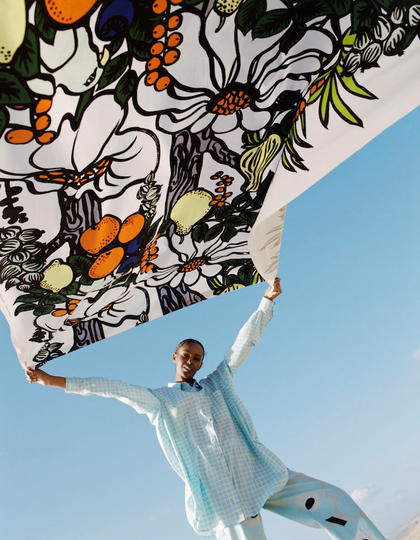
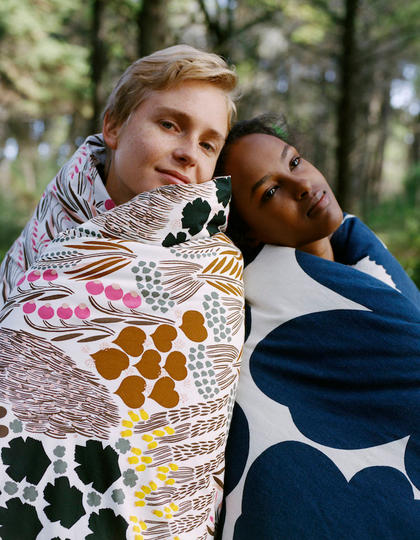
In the throes of love, a good friend in his mid-20s once
described finding “the one” as “seeing in technicolour for the
first time”. I guessed he was having some pretty mind-blowing
bedroom time. Yet it also made me think: why are we so
monochromatic between the sheets? When we opt for neutral-coloured
sheets, does that reflect the fact that we’re stuck in our comfort
zone?
The bold, bright and beautiful flower print of Finnish brand
Marimekko flashed before my mind’s eye, so I consulted
them on the matter. “As the daily lives of people around the world
are getting more and more hectic, people pay an increasing amount
of attention to rest and relaxation,” said designer Pauliina Varis.
She noted: “Colours can have a huge impact on our mood, and the
same goes for prints. They can calm us down, harmonise and reduce
stress, but they can also energise and motivate us, make us
happier.” She continued: “It’s important to choose designs based on
what makes you feel good. This will contribute to your overall
wellbeing.”
For Marimekko, being in tune with the seasons are key. It’s very
New Nordic. “For the hot summer, we could choose a cotton-linen
material that has a naturally soft yet cool touch and great
thermoregulating properties,” Varis adds.
The brand’s most popular duvet prints include the classic Unikko
flower designed by Maija Isola in 1964 and the Räsymatto dots by
Maija Louekari in 2010. “I think their popularity comes from the
timeless yet playful design and intriguing new colourways,” says
Varis. “As a company, our mission is to bring joy to people through
bold prints and colours.”
